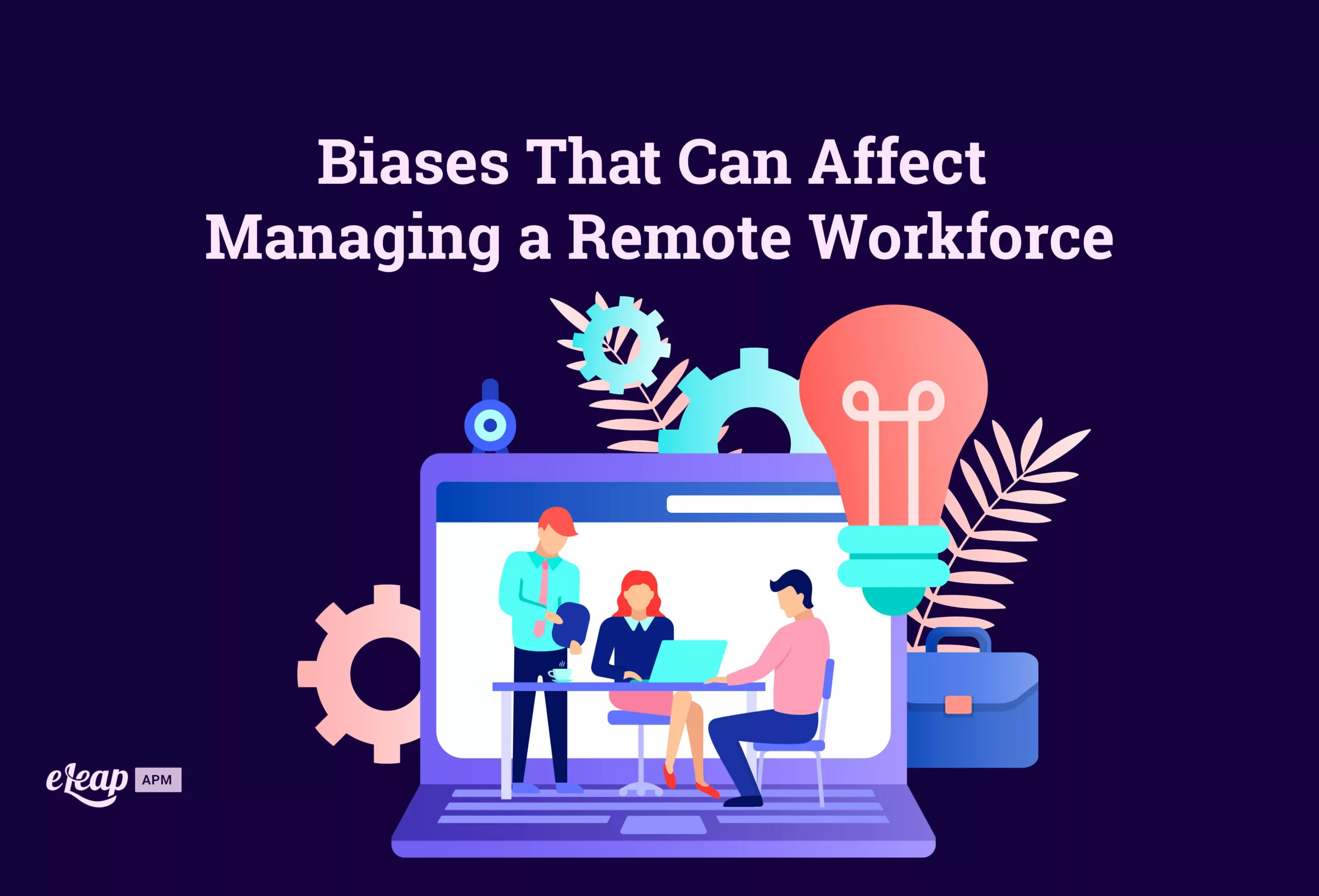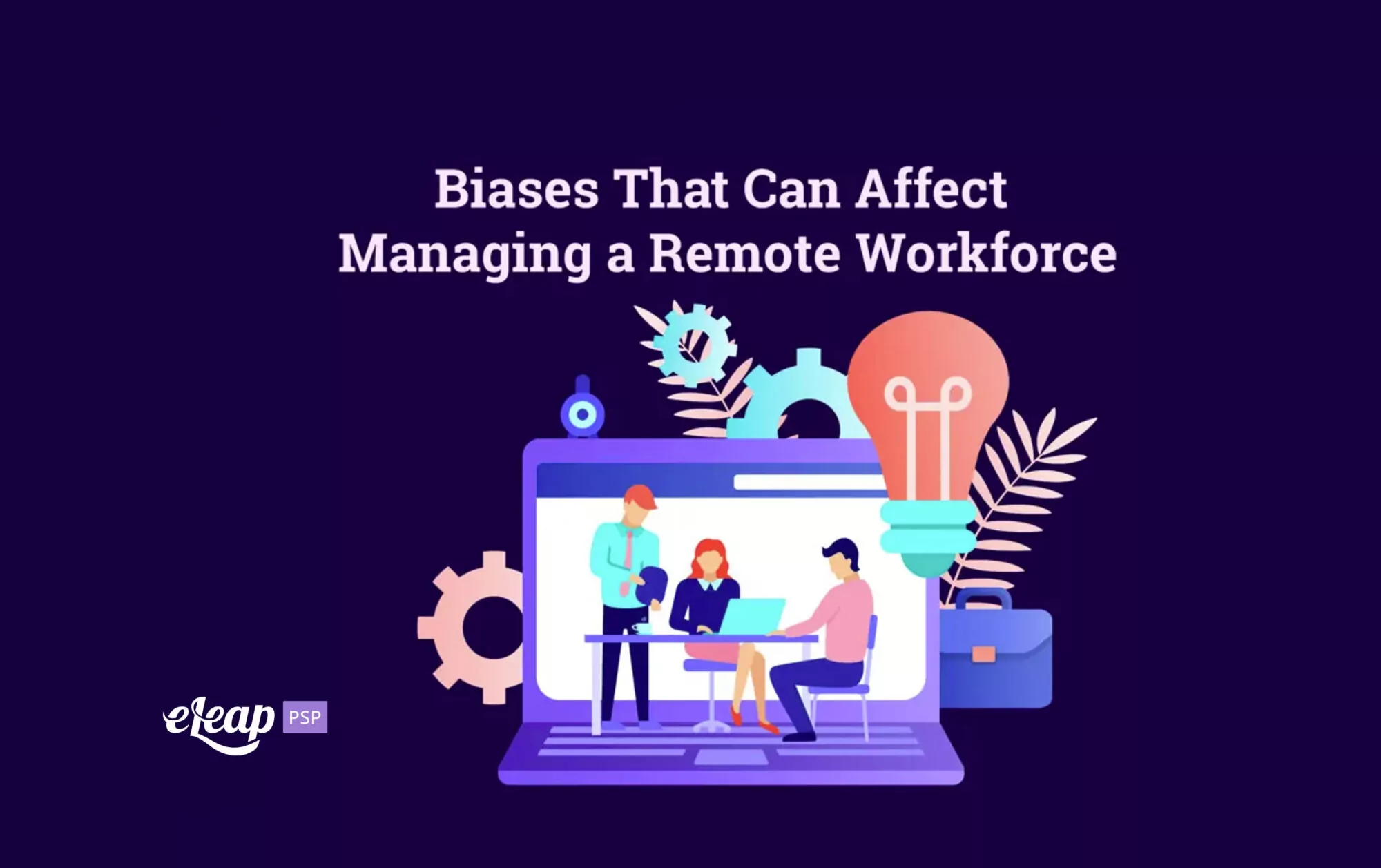Biases That Can Affect Managing a Remote Workforce

Remote work is the future. Following the Coronavirus pandemic, more workforces are working remotely now than ever. Some are entirely remote, some are only partly remote, but no matter your organization’s individual situation, you need to know how to efficiently manage distributed team members. Here, we will go over some of the top biases that can be a barrier to managing remote workers. As the level of remote work increases so will instances of remote bias continue to plague organizations which do not have mitigation measures in place.

The Primacy Bias
This is another cognitive bias that encourages managers to draw conclusions based on partial information. You’ve heard people say first impressions matter… Well, they do when the primacy bias is in play. This bias occurs when managers form negative or positive opinions about an employee solely based on how they perform on the first few projects or, more frequently, their first impressions. An example of how this may negatively affect remote workers might be hiring a distributed employee in a different time zone who doesn’t respond to emails efficiently on their first day due to their location and the time difference. In this case, the manager might already form an opinion about the employee’s tardiness and labeled it as procrastination due to the primacy bias. As a result of this event, future interactions with that employee are likely to be tarnished, culminating in a jaded review at the end of the year.
The Distance Bias
This is probably one of the biggest barriers when managing remote workers, as this bias suggests we favor those who are in closer proximity to us. Team members who work remotely or a hybrid team with remote employees must contend with this bias.
Geographically dispersed workers are sometimes viewed as less valuable than in-house staff because of distance bias. Or perhaps managers fall prey to forgetting about remote workers and paying them less attention than in-person employees simply because of distance.
The Recency Bias
This cognitive bias occurs when you easily remember and place too much emphasis on the employee’s most recent performance rather than taking the entire year into account. An employee’s overall performance will be distorted by not taking into account the employee’s strengths and weaknesses over a longer period, including when they may have worked in-person rather than remotely.
The recency bias can be detrimental, as employees may feel overvalued or undervalued. It’s especially tough for those who put in significant effort in the first part of the fiscal year but failed to follow through as the year ended due to circumstances beyond their control. Additionally, this bias can favor employees who put in extra effort during critical times, such as before a performance review, but fail to perform the rest of the year.
The recency bias can be a problem when managing remote teams for two primary reasons. Some employees may have performed better since transitioning to remote work, while others may have struggled with performance in a remote environment. Without taking into account an employee’s performance overall, managers may have an unfair view of performance as a whole.
The Leniency Bias
The leniency bias is when managers are lenient or more understanding with certain employees, which can cause opinions to get distorted and cause serious issues. There are several reasons why the leniency bias might occur, such as a manager sympathizing with an individual’s circumstances and granting them exceptions that they don’t give to other employees or a pre-existing personal relationship between a manager and an employee.
Managers may also fall prey to the leniency bias if they wish to make their team appear as though they are performing better than they actually are. For example, a manager may have sympathized with a remote worker’s circumstance during the pandemic, and due to this, they ranked them higher on a performance review in the hopes it would bolster their confidence and encourage them to work harder. Even though this might seem like a kind and sympathetic thing to do during difficult circumstances, managers need to go out of their way to see all employees equally, remote workers or not. This means being objective about situations and not granting leniency to particular employees while being much harder on others. There may also be issues with managers being tougher on distributed workers because they have the belief that they have things much easier since they’re working from home. Thus, the leniency bias is working in favor of in-office employees.
The Similarity Bias
It’s a natural tendency to categorize others according to their characteristics. We also tend to like people who display similar characteristics to ourselves. Thus, employees who display similar beliefs and characteristics to a manager might be favored.
In relation to distributed employees, remote workers often tend to favor those with a similar remote work pattern and habits, such as whether they turn on their camera in meetings or are comfortable with technology, which can, in turn, affect a manager’s assessment of productivity and performance.
To help with this bias, it’s helpful to encourage the entire remote workforce to see themselves as part of the same team with the same goals regardless of differing characteristics or location.
Many organizations will continue to have a robust presence of remote workers even after the pandemic is long gone. All businesses should take steps to minimize or prevent bias creeping into performance reviews and hindering their effectiveness. Even though remote work might be novel for many organizations, it can actually help teams become closer and work more effectively if managed correctly. Keep track of your team’s output after each accomplishment or project and get to know remote workers one-on-one. And, of course, try not to let first impressions or one-off performance be your anchor when it comes to reviews or how you treat team members. If you manage remote work carefully and put in the time and effort, there’s no reason why your distributed employees can’t be some of the best on your team.